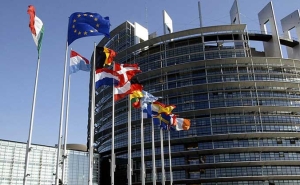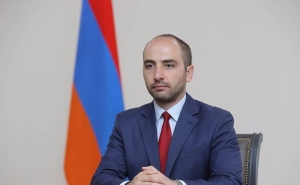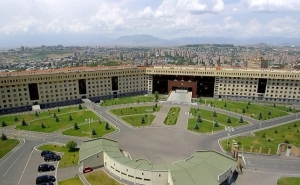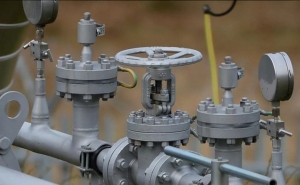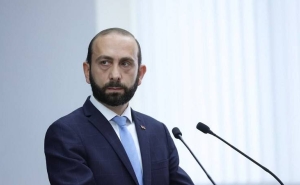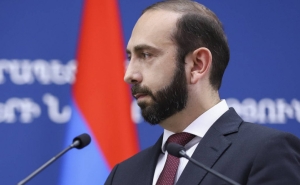Massacres of Armenians in Baku: Historical Background
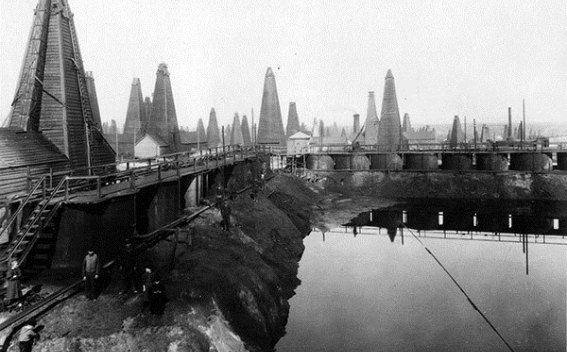
The massacres of Armenians in Baku, Azerbaijan’s capital, broke out on January 13, 1990, and lasted until January 19 during which many Armenians were beaten, tortured or murdered, and their apartments raided, robbed or burned. This resulted in fleeing of almost all the Armenians from the city.
More than 90 Armenians were dead and over 700 injured as a result of Baku massacres. This was one of the acts of ethnic violence in the context of the Nagorno conflict, directed against the demands of the Karabakh Armenians to secede from Azerbaijan and unify with Armenia.
The events in Baku were reflected in a reportof the UN Committee in elimination of discrimination against women, July 27, 1997: "For five days in January of 1990, the Armenian community of Baku, the capital of Azerbaijan, were killed, tortured, robbed and humiliated. Pregnant women and babies were molested, little girls were raped in front of their parents' eyes, Christian crosses were burned on their backs, and they were abused for their Christian faith."
Bill Keller, who was in Baku after the events, in his report for The New York Times wrote: "Here and there, boarded windows or soot-blackened walls mark an apartment where Armenians were driven out by mobs and their belongings set afire on the balcony.’’
According to the National Interest, massacres of Armenians in Baku were not spontaneous and one-time event but were among series of ethnic violence employed by the Azerbaijanis against the Armenian population during the Karabakh conflict. In 1988 the Armenians of Artsakh started voicing their demands for their unification with Armenia. On February 20, 1988 the Soviet of People's Deputies in Karabakh voted to request the transfer of the region to Armenia. This process took place in the light of the new economic and political policies, Perestroika and Glasnost, introduced by the new General Secretary of the Soviet Union Mikhail Gorbachev who had come to power in 1985. This unprecedented action by a regional soviet brought out tens of thousands of demonstrations both in Stepanakert and Yerevan, but Moscow rejected the Armenians' demands calling them as "nationalists" and "extremists". On the following day demonstrations were held by Azerbaijanis in Baku and other cities of Azerbaijan against the unification of Karabakh with Armenia, during which strong anti-Armenian sentiments were voiced: the common slogans were 'Death to Armenians', 'Armenians out of Azerbaijan'.
On February 27, 1988 a massive pogrom was carried out in Sumgait during which the Armenian population of the city was brutally slaughtered and expelled. The Sumgait pogrom was followed by another pogrom against Armenians in 1988 in Kirovabad (today's Ganja) -the second largest city of Azerbaijan from where all the Armenians were expelled. In spring and summer 1988 the ethnic tensions were escalating between the Armenians and the Azerbaijanis. After the Sumgait tragedy a massive migration of Armenians from Azerbaijan began. By 1989 the Armenians stayed only in those places where they had a well-established community, including in Baku. By the beginning of 1990 there were only about 30-40 thousand Armenians left in Baku, mostly women and pensioners. In December 1989 the Supreme Soviets of the Armenian SSR and Nagorno-Karabakh passed a resolution on the formal unification of Nagorno-Karabakh with Armenia, in accordance with the Soviet law on the people’s right to self-determination. The pogrom of Armenians in Baku took place shortly afterwards and according to a number of sources it was a direct response to this resolution.
As 100 Years - 100 Facts suggests, Armenians once formed a sizable community in Baku. Though the date of their original settlement is unclear, Baku's Armenian population swelled during the nineteenth century, when it became a major center for oil production and offered other economic opportunities to enterprising investors and businessmen. Their numbers remained strong into the twentieth century, despite the turbulence of the Russian Revolutions of 1917, but almost all the Armenians fled the city in 1990 after being targeted in a pogrom that occurred during the dissolution of the Soviet Union and the early stages of the Karabakh War.
Other materials on this subject
- Russian forces have clearly failed in their duties: senators press Biden Administration to break Azerbaijan’s blockade The United States cannot stand aside while the Aliyev regime callously threatens the lives of Nagorno-Karabakh’s citizens, and must hold Azerbaijan to account for blocking a civilian population’s access...
- US calls for the full restoration of free movement through the Lachin Corridor "We remain concerned about impeded access to the Lachin Corridor and the humanitarian implications of this situation. This sets back the peace process and undermines international confidence. We call for...
- Azerbaijani forces violate the ceasefire in Artsakh The ceasefire violation was reported to the command of the Russian peacekeeping troops.
- Azerbaijani units violate ceasefire in several directions, Artsakh’s Defense Ministry says The Armenian side has no losses. The incidents of ceasefire violations were reported to the command of the Russian peacekeeping troops.
- Russian Diplomat Reassures Armenians Over Corridor In Karabakh "The parties are in direct contact, and I assure you that the peacekeepers will not move a single centimeter until there is a new corridor," Seleznyov said.
-
 17:08
17:08The regular session of the Anti-corruption Policy Council takes place in Jermuk
-
 15:05
15:05The Prime Minister sends congratulatory messages to the supreme leader of Iran and the President of Iran
-
 11:11
11:11Armenia sends earthquake aid to Turkey
-
 10:43
10:43Commemoration of the Pontiff St. Sahak Partev
-
 09:16
09:16Some roads are closed and difficult to pass in Armenia
-
 19:55
19:55Phone conversation of the Foreign Minister of Armenia with the U.S. Assistant Secretary of State for European and Eurasian Affairs
-
 18:30
18:30Prime Minister Pashinyan and President Khachaturyan meet
-
 18:20
18:20Ararat Mirzoyan with Co-Chairman of the OSCE Minsk Group of France Brice Roquefeuil
-
 17:01
17:01Humans could land on Mars within 10 years, Musk predicts
-
 16:45
16:45France, US urge 'immediate' end to Nagorno Karabakh blockade
-
 16:01
16:01Blockaded Nagorno Karabakh launches fundraiser to support quake-hit Syria
-
 15:59
15:59Earthquake death toll in Turkey rises to 18,342
-
 15:43
15:43Ararat Mirzoyan Held a Telephone Conversation with Sergey Lavrov
-
 15:06
15:06French president rules out fighter jet supplies to Ukraine in near future
-
 14:47
14:475 Day Weather Forecast in Armenia
-
 14:44
14:44President Vahagn Khachaturyan wrote a note in the book of condolences opened in the Embassy of Syria in Armenia
-
 14:20
14:20Azerbaijan’s provocations impede establishment of peace and stability – Armenian FM tells Russian Co-Chair of OSCE MG
-
 12:57
12:57France representation to OSCE: Paris calls on Azerbaijan to restore freedom of movement through Lachin corridor
-
 11:40
11:40Command of Kosovo forces highly appreciated preparation of Armenian peacekeepers
-
 10:16
10:16The United States withdrew from sanctions against Syria for six months the provision of assistance after the earthquake
day
week
month
Humidity: %
Wind: km/h


